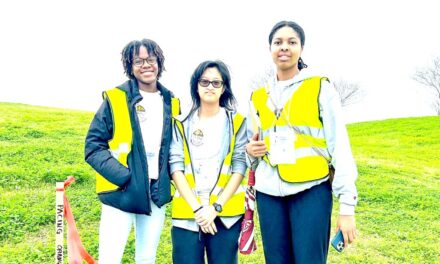By Stacy M. Brown | NNPA Newswire Senior National Correspondent
Donald Trump, who holds the ignominious distinction of being the only twice-impeached U.S. president, has become the first commander-in-chief to have criminal charges referred against him.
The dubious achievement occurred on Monday, Dec. 19, when the House Select Committee investigating the Jan. 6 riot at the U.S. Capitol formally requested that the U.S. Department of Justice charge Trump with inciting, assisting, or engaging in insurrection against the United States and “giving aid or comfort” to an insurrection.
Chaired by Rep. Bennie Thompson (D-Mississippi) and vice chair Rep. Liz Cheney (R-Wyoming), the committee released a 161-page summary that focused on Trump’s involvement in the effort to overturn his 2020 election loss to President Joe Biden.
The committee concluded that Trump’s efforts “makes him responsible for the violence that unfolded, and unfit to hold office.”
The panel then laid out a criminal case for the Justice Department, including a cache of evidence.
Based upon the assembled evidence, the committee has reached a series of specific findings, including the following 17 powerful conclusions against Trump:
• Beginning election night and continuing through January 6th and thereafter, Trump purposely disseminated false allegations of fraud related to the 2020 Presidential election to aid his effort to overturn the election and for purposes of soliciting contributions. “These false claims provoked his supporters to violence on January 6th,” the committee determined.
• Knowing that he and his supporters had lost dozens of election lawsuits, and despite his own senior advisors refuting his election fraud claims and urging him to concede his election loss, Trump refused to accept the lawful result of the 2020 election. Rather than honor his constitutional obligation to “take Care that the Laws be faithfully executed,” President Trump instead plotted to overturn the election outcome.
• Despite knowing that such an action would be illegal, and that no State had or would submit an altered electoral slate, Trump corruptly pressured Vice President Mike Pence to refuse to count electoral votes during Congress’s joint session on January 6th.
• Trump sought to corrupt the U.S. Department of Justice by attempting to enlist Department officials to make purposely false statements and thereby aid his effort to overturn the Presidential election. After that effort failed, Trump offered the position of Acting Attorney General to Jeff Clark knowing that Clark intended to disseminate false information aimed at overturning the election.
• Without any evidentiary basis and contrary to State and Federal law, Trump unlawfully pressured State officials and legislators to change the results of the election in their States.
• Trump oversaw an effort to obtain and transmit false electoral certificates to Congress and the National Archives.
• Trump pressured Members of Congress to object to valid slates of electors from several States.
• Trump purposely verified false information filed in Federal court.
• Based on false allegations that the election was stolen, Trump summoned tens of thousands of supporters to Washington for January 6th. Although these supporters were angry and some were armed, Trump instructed them to march to the Capitol on January 6th to “take back” their country.
• Knowing that a violent attack on the Capitol was underway and knowing that his words would incite further violence, Trump purposely sent a social media message publicly condemning Vice President Pence at 2:24 p.m. on January 6th.
• Knowing that violence was underway at the Capitol, and despite his duty to ensure that the laws are faithfully executed, Trump refused repeated requests over a multiple hour period that he instruct his violent supporters to disperse and leave the Capitol, and instead watched the violent attack unfold on television. This failure to act perpetuated the violence at the Capitol and obstructed Congress’s proceeding to count electoral votes.
• Each of these actions by Trump was taken in support of a multi-part conspiracy to overturn the lawful results of the 2020 Presidential election.
• The intelligence community and law enforcement agencies did successfully detect the planning for potential violence on January 6th, including planning specifically by the Proud Boys and Oath Keeper militia groups who ultimately led the attack on the Capitol. As January 6th approached, the intelligence specifically identified the potential for violence at the U.S. Capitol. This intelligence was shared within the executive branch, including with the Secret Service and the President’s National Security Council.
• Intelligence gathered in advance of January 6th did not support a conclusion that Antifa or other left-wing groups would likely engage in a violent counterdemonstration, or attack Trump supporters on January 6th. Indeed, intelligence from January 5th indicated that some left-wing groups were instructing their members to “stay at home” and not attend on January 6th.20 Ultimately, none of these groups was involved to any material extent with the attack on the Capitol on January 6th.
• Neither the intelligence community nor law enforcement obtained intelligence in advance of January 6th on the full extent of the ongoing planning by President Trump, John Eastman, Rudolph Giuliani and their associates to overturn the certified election results. Such agencies apparently did not (and potentially could not) anticipate the provocation President Trump would offer the crowd in his Ellipse speech, that President Trump would “spontaneously” instruct the crowd to march to the Capitol, that President Trump would exacerbate the violent riot by sending his 2:24 p.m. tweet condemning Vice President Pence, or the full scale of the violence and lawlessness that would ensue. Nor did law enforcement anticipate that President Trump would refuse to direct his supporters to leave the Capitol once violence began. No intelligence community advance analysis predicted exactly how President Trump would behave; no such analysis recognized the full scale and extent of the threat to the Capitol on January 6th.
• Hundreds of Capitol and DC Metropolitan police officers performed their duties bravely on January 6th, and America owes those individual immense gratitude for their courage in the defense of Congress and our Constitution. Without their bravery, January 6th would have been far worse. Although certain members of the Capitol Police leadership regarded their approach to January 6th as “all hands-on deck,” the Capitol Police leadership did not have sufficient assets in place to address the violent and lawless crowd.
• Capitol Police leadership did not anticipate the scale of the violence that would ensue after President Trump instructed tens of thousands of his supporters in the Ellipse crowd to march to the Capitol, and then tweeted at 2:24 p.m. Although Chief Steven Sund raised the idea of National Guard support, the Capitol Police Board did not request Guard assistance prior to January 6th. The Metropolitan Police took an even more proactive approach to January 6th, and deployed roughly 800 officers, including responding to the emergency calls for help at the Capitol. Rioters still managed to break their line in certain locations, when the crowd surged forward in the immediate aftermath of Trump’s 2:24 p.m. tweet. The Department of Justice readied a group of Federal agents at Quantico and in the District of Columbia, anticipating that January 6th could become violent, and then deployed those agents once it became clear that police at the Capitol were overwhelmed. Agents from the Department of Homeland Security were also deployed to assist.
• President Trump had authority and responsibility to direct deployment of the National Guard in the District of Columbia, but never gave any order to deploy the National Guard on January 6th or on any other day. Nor did he instruct any Federal law enforcement agency to assist. Because the authority to deploy the National Guard had been delegated to the Department of Defense, the Secretary of Defense could, and ultimately did deploy the Guard. Although evidence identifies a likely miscommunication between members of the civilian leadership in the Department of Defense impacting the timing of deployment, the Committee has found no evidence that the Department of Defense intentionally delayed deployment of the National Guard. The Select Committee recognizes that some at the Department had genuine concerns, counseling caution, that President Trump might give a “An insurrection is a rebellion against the authority of the United States,” said Rep. Jamie Raskin (D-Maryland).
“It is a grave federal offense anchored in the Constitution. … Anyone who incites others to engage in rebelling, assists them in doing so or gives aid and comfort to those engaged in insurrection is guilty of a federal crime.”
Raskin continued:
“The Committee believes that more than sufficient evidence exists for a criminal referral of former President Trump for assisting or aiding and comforting those at the Capitol who engaged in a violent attack on the United States,” Raskin continued.
“The Committee has developed significant evidence that President Trump intended to disrupt the peaceful transition of power.”










